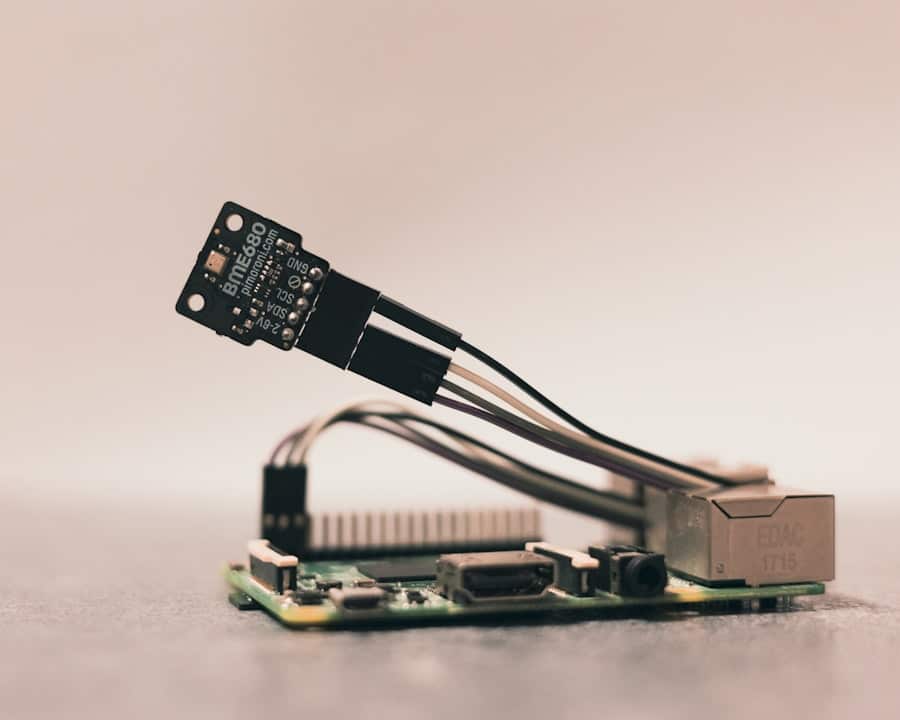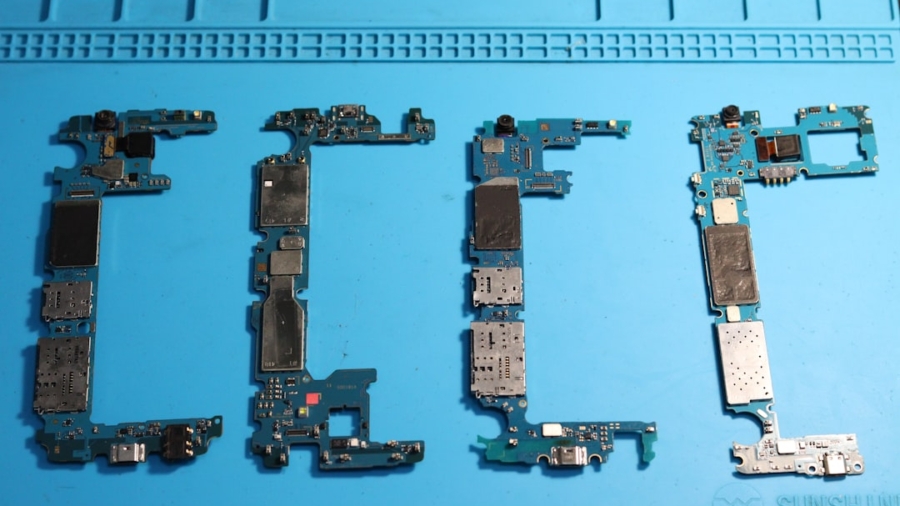The Internet of Things (IoT) has revolutionized the way we interact with technology, embedding smart devices into our daily lives and business operations. However, this convenience comes with a host of security risks that cannot be overlooked. IoT devices, ranging from smart thermostats to industrial sensors, often lack robust security features, making them vulnerable to cyberattacks.
These devices can serve as entry points for malicious actors seeking to infiltrate larger networks. For instance, a compromised smart camera could provide an attacker with access to a corporate network, allowing them to exfiltrate sensitive data or disrupt operations. Moreover, the sheer volume of IoT devices in use today amplifies the potential attack surface.
According to various industry reports, billions of IoT devices are expected to be connected to the internet in the coming years. Each device represents a potential vulnerability, and many are deployed without adequate security measures. The risks are not limited to data breaches; they can also include physical threats, such as unauthorized access to secure areas through compromised smart locks.
As organizations increasingly rely on IoT technology for efficiency and automation, understanding these risks becomes paramount for safeguarding both personal and corporate information.
Key Takeaways
- IoT devices pose security risks due to their interconnected nature and potential vulnerabilities
- Regularly assess and update your network’s security to protect against IoT device threats
- Choose IoT devices from reputable manufacturers with strong security features
- Secure your IoT devices by changing default passwords, updating firmware, and using encryption
- Implement access control measures such as strong authentication and authorization protocols for IoT devices
Assessing Your Network’s Security
Before integrating IoT devices into any network, it is crucial to conduct a thorough assessment of the existing security infrastructure. This involves evaluating the current network architecture, identifying potential vulnerabilities, and understanding how IoT devices will interact with other components of the network. A comprehensive security audit should include an analysis of firewalls, intrusion detection systems, and existing protocols for data encryption.
By identifying weak points in the network, organizations can take proactive measures to fortify their defenses against potential threats. Additionally, organizations should consider employing penetration testing to simulate attacks on their network. This method allows security teams to identify vulnerabilities that may not be apparent through standard assessments.
For example, a penetration test might reveal that certain IoT devices are using outdated firmware that could be exploited by attackers. By addressing these vulnerabilities before deploying IoT devices, organizations can significantly reduce their risk profile and create a more secure environment for their operations.
Choosing the Right IoT Devices

Selecting the appropriate IoT devices is a critical step in ensuring overall security. Not all IoT devices are created equal; some come equipped with advanced security features while others may prioritize cost over safety. When evaluating potential devices, organizations should prioritize those that offer robust security protocols, such as end-to-end encryption and regular firmware updates.
For instance, devices that support secure communication protocols like TLS (Transport Layer Security) can help protect data in transit from eavesdropping or tampering. Furthermore, organizations should consider the reputation of the manufacturers behind these devices. Established companies with a track record of prioritizing security are more likely to provide timely updates and patches for their products.
In contrast, lesser-known manufacturers may not have the resources or commitment to maintain their devices’ security over time. Researching user reviews and industry reports can provide valuable insights into the reliability and security of specific IoT products, enabling organizations to make informed decisions that align with their security objectives.
Securing Your IoT Devices
Once the right IoT devices have been selected, the next step is to implement security measures tailored to each device’s unique characteristics. This includes changing default passwords, which are often easily guessable and widely known among attackers. Organizations should enforce strong password policies that require complex combinations of letters, numbers, and special characters.
Additionally, enabling two-factor authentication (2FA) wherever possible adds an extra layer of protection against unauthorized access.
Many manufacturers release updates to address vulnerabilities that could be exploited by cybercriminals.
Organizations should establish a routine for checking for updates and applying them promptly to minimize exposure to known threats. Furthermore, segmenting IoT devices from critical systems within the network can help contain potential breaches and limit the impact of any successful attacks.
Implementing Access Control Measures
Access control is a fundamental component of any comprehensive security strategy for IoT devices. Organizations must define who has access to each device and what level of control they possess. Role-based access control (RBAC) can be an effective method for managing permissions based on users’ roles within the organization.
For example, only IT personnel may need administrative access to configure settings on a smart thermostat, while general employees may only require read-only access. In addition to RBAC, organizations should consider implementing network segmentation to further enhance access control measures. By isolating IoT devices on separate subnets, organizations can limit communication between devices and critical systems.
This approach not only reduces the risk of lateral movement by attackers but also simplifies monitoring and management efforts. Regularly reviewing access logs can help identify any unauthorized attempts to access IoT devices, allowing organizations to respond swiftly to potential threats.
Monitoring and Managing Your IoT Devices

Continuous monitoring is essential for maintaining the security of IoT devices throughout their lifecycle. Organizations should deploy monitoring tools that can detect unusual behavior or anomalies indicative of a potential breach. For instance, if an IoT device suddenly begins transmitting data at an unusually high rate or communicates with an unknown external IP address, this could signal a compromise that requires immediate investigation.
In addition to real-time monitoring, organizations should establish a management framework for their IoT devices that includes regular audits and assessments. This framework should outline procedures for evaluating device performance, security posture, and compliance with organizational policies. By maintaining an ongoing inventory of connected devices and their configurations, organizations can ensure that they remain aware of any changes that could impact security.
Educating Employees on IoT Security
Human error remains one of the most significant vulnerabilities in any security strategy, particularly when it comes to IoT devices. Therefore, educating employees about the risks associated with these technologies is crucial for fostering a culture of security awareness within the organization. Training programs should cover best practices for using IoT devices safely, such as recognizing phishing attempts or understanding the importance of strong passwords.
Moreover, organizations should encourage employees to report any suspicious activity related to IoT devices promptly. Establishing clear communication channels for reporting potential security incidents can help mitigate risks before they escalate into more significant problems.
Creating a Response Plan for IoT Security Incidents
Despite best efforts to secure IoT devices, incidents may still occur. Therefore, having a well-defined response plan is essential for minimizing damage and restoring normal operations quickly. This plan should outline specific steps to take in the event of a security breach involving IoT devices, including identifying affected systems, containing the breach, and notifying relevant stakeholders.
Additionally, organizations should conduct regular drills to test their response plans and ensure that all team members understand their roles during an incident. These exercises can help identify gaps in the plan and provide valuable insights into areas for improvement. By preparing for potential incidents proactively, organizations can enhance their resilience against cyber threats and ensure a swift recovery from any disruptions caused by compromised IoT devices.
In addition to understanding how to deploy IoT devices safely, it’s crucial to consider the infrastructure that supports these technologies. For those interested in ensuring their digital projects are hosted on reliable platforms, you might find the article on the Best WordPress Hosting Companies 2023 particularly insightful. This guide provides an overview of top hosting services, which can be essential for maintaining the backend of IoT applications, ensuring they run smoothly and securely.
FAQs
What is IoT deployment?
IoT deployment refers to the process of installing and integrating IoT devices into a network or system to enable communication and data exchange between the devices and other connected systems.
Why is it important to deploy IoT devices safely?
Deploying IoT devices safely is important to ensure the security and integrity of the network and the data being transmitted. It also helps to prevent unauthorized access and potential cyber threats.
What are the steps involved in deploying IoT devices safely?
The steps involved in deploying IoT devices safely include planning the deployment, securing the devices and network, implementing access controls, monitoring the devices, and regularly updating and patching the devices and network.
What are some best practices for deploying IoT devices safely?
Some best practices for deploying IoT devices safely include conducting a risk assessment, using strong encryption and authentication methods, implementing secure device management, and providing regular security training for personnel.
How can businesses benefit from deploying IoT devices safely?
Businesses can benefit from deploying IoT devices safely by ensuring the reliability and security of their IoT infrastructure, protecting sensitive data, and maintaining the trust of their customers. Safe deployment also helps to minimize the risk of costly security breaches and downtime.

